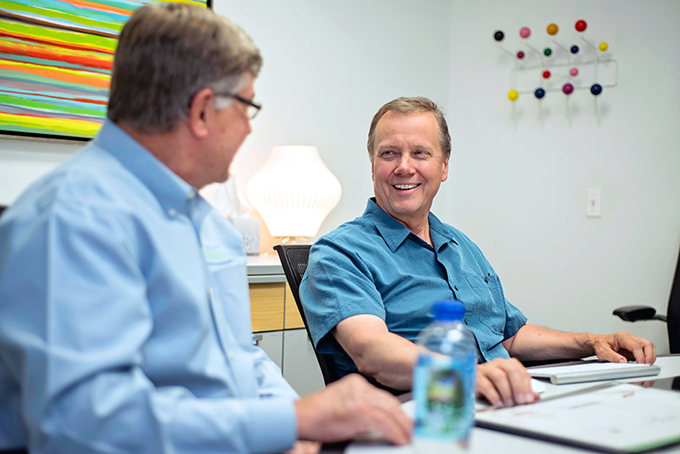Responsive design isn’t a new concept. It’s all about prioritizing content based on the available space to communicate. Responsive logos, however, are a newer concept.
What’s a responsive logo?
I was trained to operate with the “Branding is Sacred” mindset – one logo for everything and it should never be tampered with. Times have changed, and so has branding. Now we have to create a logo that will communicate brand recognition on an ever-increasing number of media –ranging from print, digital, and physical applications.
What I’ve learned is that it all condenses down into good planning and producing a set of brand standards that will ensure the brand will be legible in most every situation.
Why’s it important?
Responsive logos are all about prioritizing recognizable information. A brand standards guide will give you all the information you need to make sure that you’re creating something that lives within the look and feel of whatever brand you’re working with. Responsive logos take that one step further by creating a series of logos that are optimized for different scenarios.
The main version of a logo is probably not best suited for the navigation bar of a mobile website, so why not create a special version just for it? By doing this you’re adding an extra layer of control to help make sure the logo is not negatively impacted by being resized. Sure, it’ll add a bit of extra production time but that level of attention to detail is certainly worth it.
An Example of a Recent Responsive Logo Design Project
This image below shows our branding solution for the Shawnee Tribe Cultural Center.
- The full logo (1) is suited best for larger areas.
- The second variant (2) is used when the view space is reduced. The rectangle detail is removed and the secondary type is increased so it does not cause visual issues when decreased in size.
- The next version (3) was created specifically to populate a navigation bar by switching to a more horizontal layout.
- The next version (4) is just the mark with some of the shapes adjusted and colors simplified to be more clear at even smaller sizes. The idea is that by the time the user sees this version, they will have been exposed to the branding enough that it still, visually, links back to the full logo.
- The final version (5) has been reduced to 2 colors and the shapes have been simplified, again, to only have 4 pointed shapes instead of 6 in the primary logo. This version would populate a favicon area.
The days of designers creating one logo for everything from vehicle signage to letterhead are long over. The days of designers creating a unified brand across a variety of digital media display is here.
Interested in learning more about our logo design process? Contact us to get started today.
